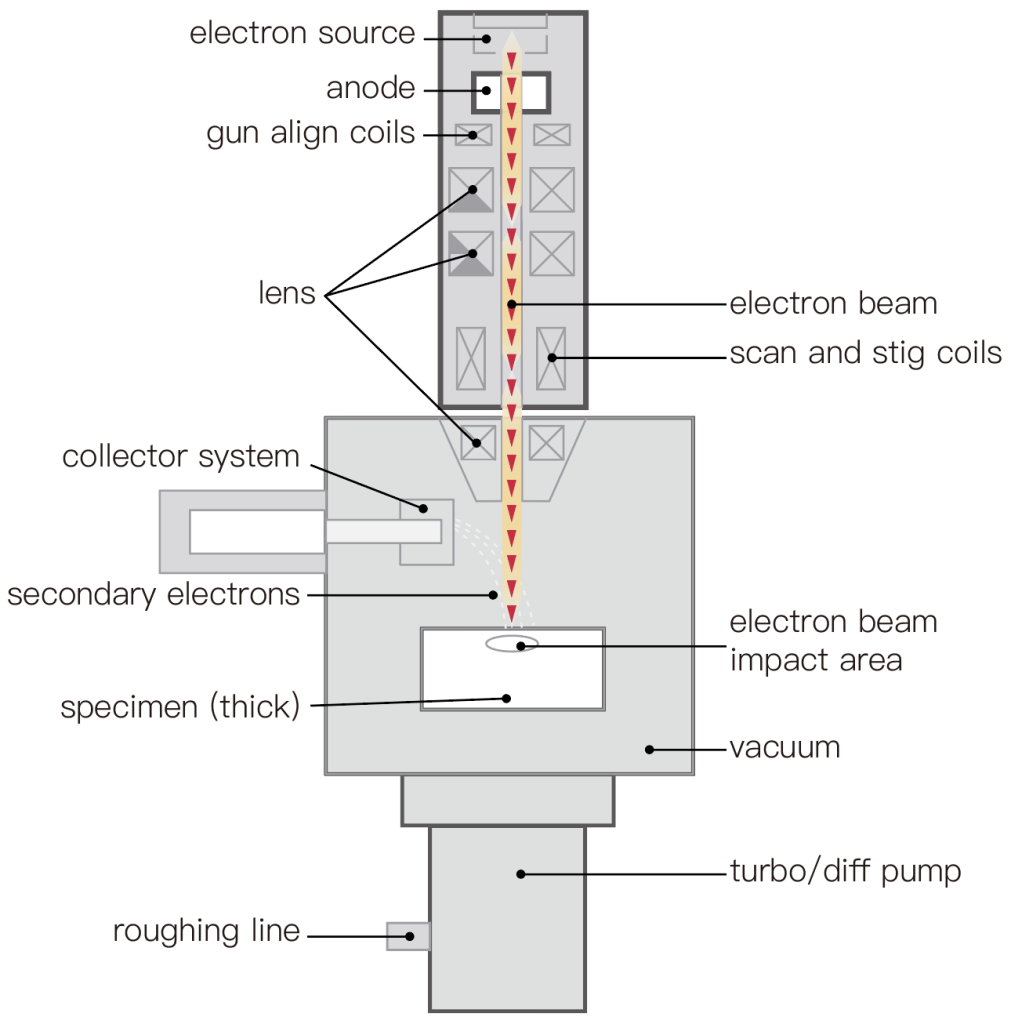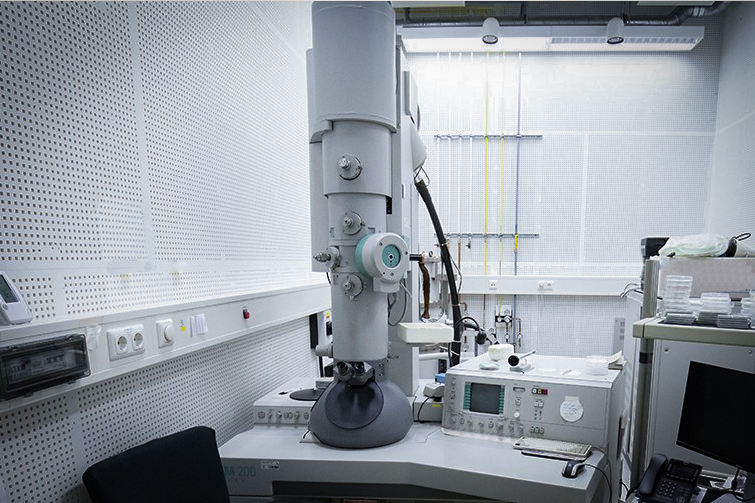spherical aberration electron microscope
The wavelength of the electron beam at 1100 kV is 0.037 Angstroms, while the point resolution of ordinary TEM is only 0.8 nanometers. This is mainly caused by the aberrations of the magnetic lens in the IEM. Spherical aberration is spherical aberration, which is a kind of lens aberration. The other three main aberrations are astigmatism, coma, and chromatic aberration.
No lens system, whether optical or electromagnetic, can be absolutely perfect. For a convex lens, the converging power at the edge of the lens is stronger than that at the center of the lens, so all the light rays (electrons) cannot converge to a focal point which affects the imaging ability.
In the optical lens group, the combination of a convex lens and concave lens can effectively eliminate spherical aberration, but the electromagnetic lens has only a convex lens and no concave lens, so spherical aberration has become the most critical factor affecting TEM resolution and the most difficult to correct.
In addition, chromatic aberration is caused by electron beams with inhomogeneous energies being unable to focus on the same focal point after passing through a magnetic lens. It is the factor that affects TEM resolution second only to spherical aberration.
Since the invention of TEM, scientists have been improving its resolution. In 1992, three German scientists Harald Rose (UUIm), Knut Urban (FZJ), and Maximilian Haider (EMBL) developed a multipole correction device to adjust and control the focus center of the electromagnetic lens to achieve correction of spherical aberration, and finally achieved sub-Angstrom resolution. Known as the Big Three of ACTEM, they also won the 2011 Tianlf Award.
The multi-pole correction device gradually adjusts the spherical aberration of the TEM through the Lorentz force effect of multiple sets of magnetic mirror groups with an adjustable magnetic field on the electron beam to achieve sub-angstrom resolution.
Types of ACTEM
A TEM contains multiple magnetic lenses: condenser, objective, intermediate and projection mirrors, etc. Spherical aberration is caused by the imperfect structure of the magnetic mirror, so these magnetic mirror groups will have spherical aberration. When we correct different magnetic lenses there are different kinds of ACTEM.

When we use the STEM mode, the condenser condenses the electron beam to scan the sample for imaging. At this time, the spherical aberration of the condenser is the main reason affecting the resolution. Therefore, for STEM-based TEMs, the spherical aberration correction device will be installed at the position of the condenser, that is, AC-STEM.
When we use the image mode, the main factor that affects the imaging resolution is the spherical aberration of the objective lens. The corrector installed at the objective lens is called AC-TEM. Of course, there are also two correctors installed on one TEM, which is the so-called double spherical aberration corrected TEM.
In addition, because the calibrator has a voltage limit, different types of ACTEM have their corresponding acceleration voltages. For example, FEI TITAN 80-300 operates at a voltage of 80-300kV, and there are also low-voltage ACTEMs specially configured for low voltages.
Advantages of Spherical Aberration-Corrected Electron Microscopes
The biggest advantage of ACTEM or ACSTEM is that spherical aberration correction reduces aberrations, thereby improving resolution.
The resolution of traditional TEM or STEM is at the nanometer or sub-nanometer level, while the resolution of ACTEM can reach the angstrom level or even the sub-angstrom level. Increased resolution means a greater “deeper” understanding of materials.
How to Prepare Spherical Aberration Electron Microscopy Samples
First of all, without the help of cooperative laboratories, the cost of ACTEM testing will be very expensive. Therefore, it is very necessary to introduce how to prepare samples here. It is best to know the nature of the sample as much as possible before testing and inform the tester of this information accurately.
It is necessary to observe the sample with ordinary high-resolution TEM first. Through the pre-observation of high-resolution TEM, you need to know the following points in the good record:
- Whether the concentration of the sample is appropriate and whether the number of target sites is sufficient;
- Determine whether the sample is stable under the test voltage and determine the test voltage. Many samples will accumulate charge (poor conductivity), structure change (knock-on effect of the electron beam), etc. under electron beam irradiation;
- Observe the test target properties. For example, if you want to test the atomic structure of nanoparticles in a composite structure, you must observe whether these nanoparticles are coated with other substances, etc. Clean samples are the basis for achieving high resolution;
- Determine the sample pretreatment method, and clarify whether pretreatment such as heating is required before sample testing.
Take enough high-resolution photos and mark the characteristic sites that need further observation.
In the ACTEN test, communication with the testers is essential, talk more and ask more questions.
Spherical Aberration Corrected Transmission Electron Microscopy
After years of development of the spherical aberration corrector, with the help of the latest five-fold spherical aberration corrector, human beings have successfully corrected the influence of spherical aberration on the resolution rate to be less than that of chromatic aberration. Only by correcting chromatic aberration can the resolution rate be further improved, so the transmission electron microscope with spherical aberration and chromatic aberration correction was born.
